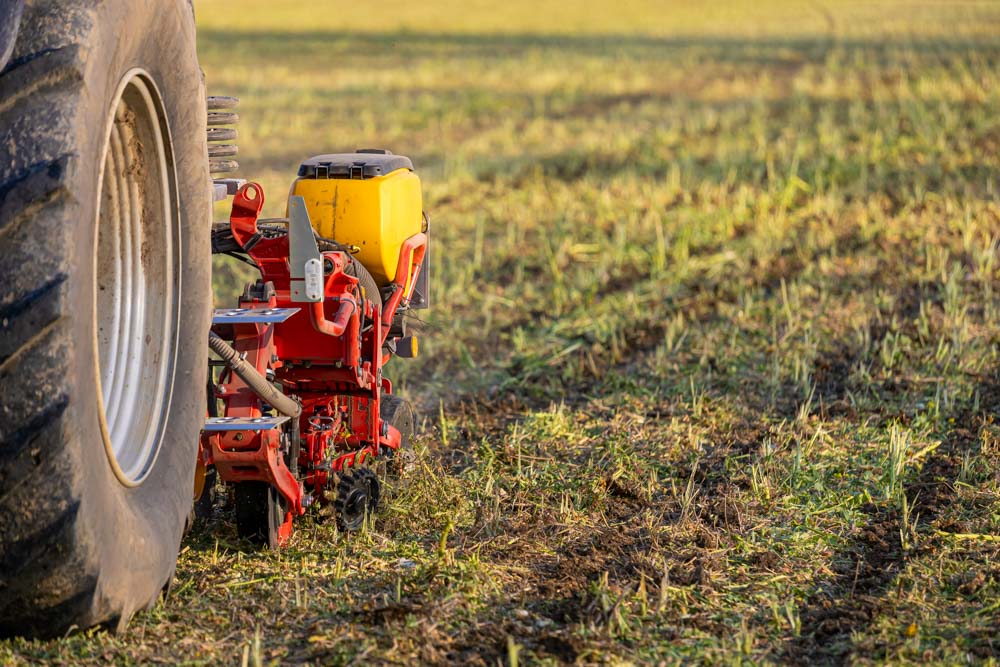If you are looking for a way to reduce soil erosion, save time and money, and improve soil health, you might want to consider strip-till farming. Strip-till is a conservation tillage system that combines the benefits of no-till and conventional tillage for row crops such as corn, cotton, and soybeans.
What is a strip-till
Strip-till is a tillage practice where only a narrow strip of soil (6 to 12 inches wide) is disturbed, leaving the rest of the soil surface covered with crop residue. The strip is usually tilled and fertilized in the fall or spring before planting. The crop is then planted into the tilled strip, which is warmer and drier than the un-tilled soil.
Benefits of strip-till farming
Strip-till offers several advantages over conventional tillage and no-till, such as:
- Reduced soil erosion. By leaving most of the soil surface undisturbed and covered with residue, strip-till reduces runoff and wind erosion.
- Improved soil health. By minimizing soil disturbance, strip-till preserves soil structure, organic matter, and biological activity. Strip-till also enhances water infiltration and storage, reduces compaction, and improves nutrient cycling.
- Lower input and farm task costs. By tilling and fertilizing only a fraction of the field, strip-till reduces fuel, labor, and machinery costs. Strip-till also reduces fertilizer losses by placing nutrients in the root zone of the crop.
- Higher yields. By creating a favorable seedbed for germination and emergence, strip-till can increase crop yields compared to no-till, especially in cold and wet soils. Strip-till will also reduce pest pressure by disrupting weed and insect cycles.
- Conserving soil moisture. By reducing evaporation from the soil surface. The untilled soil between rows acts as a mulch, conserving moisture and making it available to plants during dry periods. Therefore, less irrigation is required.
- Reducing carbon release into the atmosphere. Strip till farming is a conservation practice that minimizes soil disturbance and leaves crop residue on the surface. This helps to sequester carbon in the soil. By storing more carbon in the soil, strip-till will lower the amount of carbon dioxide that is released into the atmosphere from fossil fuels and other sources.
How to implement strip-till?
To adopt strip-till farming successfully, you need to consider several factors, such as:
- Equipment. You need a specialized strip-till machine that can cut through residue, till the soil, inject fertilizer, and form a berm in one pass. You can choose between shank or coulter options depending on your soil type and residue amount. You also need a planter that can accurately place seeds in the tilled strip.
- Timing. You can perform strip-till in the fall or spring before planting. Fall strip-till allows more time for residue decomposition and soil settling but may require re-shaping in the spring if the berms are damaged by weather or traffic. Spring strip-till requires less re-shaping but may limit your planting window due to wet soil.
- Fertilizer. You can apply fertilizer during strip-till or at planting. The type, rate, and placement of fertilizer depend on your soil test results, crop needs, and environmental conditions. You want to place fertilizer below the seed depth to avoid salt injury and enhance root uptake.
- Crop rotation. You can use strip-till for different crops, but some crops may benefit more than others. Corn is the most common crop for strip-till, as it responds well to warmer and drier soils. Cotton and soybeans can also be grown with strip-till but may require more weed control. Small grains and forages are not suitable for strip-till due to their narrow row spacing.
How AgNote can help Strip-till farming
Practical farm management software will help strip-till farmers track their field activities, monitor their crop growth, manage their inputs, and analyze their profitability. By using farm management software, strip-till farmers can make data-driven decisions that improve their efficiency and sustainability.
AgNote includes a user-friendly row crop management area where strip-till farmers can easily track inputs, irrigations, spray applications and much more. If you are interested, prease register today for a free seven-day trial and take AgNote for a test spin!
